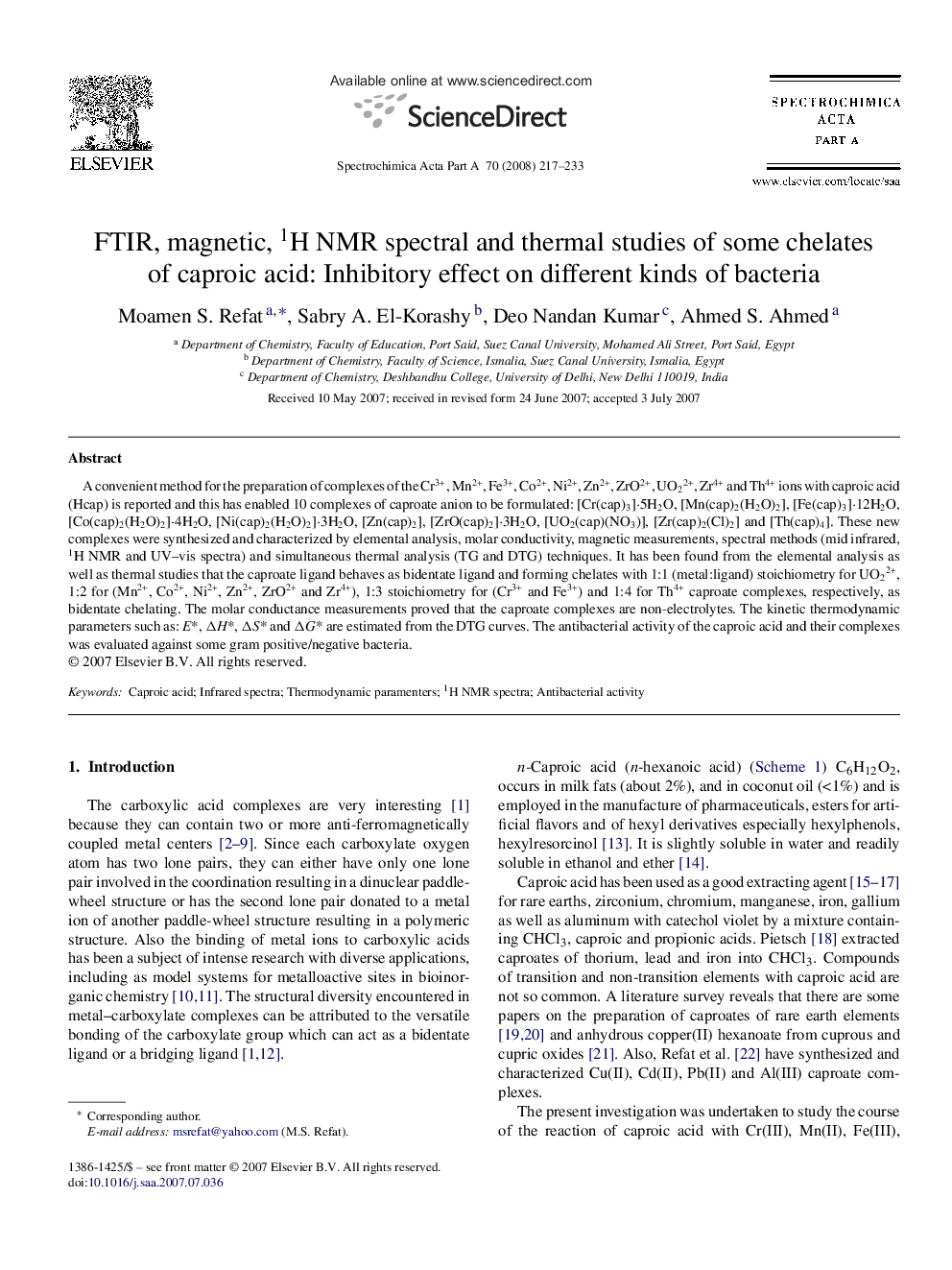| Article ID | Journal | Published Year | Pages | File Type |
|---|---|---|---|---|
| 1234936 | Spectrochimica Acta Part A: Molecular and Biomolecular Spectroscopy | 2008 | 17 Pages |
A convenient method for the preparation of complexes of the Cr3+, Mn2+, Fe3+, Co2+, Ni2+, Zn2+, ZrO2+, UO22+, Zr4+ and Th4+ ions with caproic acid (Hcap) is reported and this has enabled 10 complexes of caproate anion to be formulated: [Cr(cap)3]·5H2O, [Mn(cap)2(H2O)2], [Fe(cap)3]·12H2O, [Co(cap)2(H2O)2]·4H2O, [Ni(cap)2(H2O)2]·3H2O, [Zn(cap)2], [ZrO(cap)2]·3H2O, [UO2(cap)(NO3)], [Zr(cap)2(Cl)2] and [Th(cap)4]. These new complexes were synthesized and characterized by elemental analysis, molar conductivity, magnetic measurements, spectral methods (mid infrared, 1H NMR and UV–vis spectra) and simultaneous thermal analysis (TG and DTG) techniques. It has been found from the elemental analysis as well as thermal studies that the caproate ligand behaves as bidentate ligand and forming chelates with 1:1 (metal:ligand) stoichiometry for UO22+, 1:2 for (Mn2+, Co2+, Ni2+, Zn2+, ZrO2+ and Zr4+), 1:3 stoichiometry for (Cr3+ and Fe3+) and 1:4 for Th4+ caproate complexes, respectively, as bidentate chelating. The molar conductance measurements proved that the caproate complexes are non-electrolytes. The kinetic thermodynamic parameters such as: E*, ΔH*, ΔS* and ΔG* are estimated from the DTG curves. The antibacterial activity of the caproic acid and their complexes was evaluated against some gram positive/negative bacteria.
